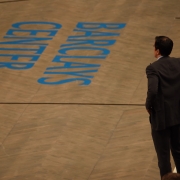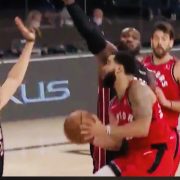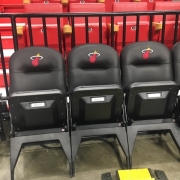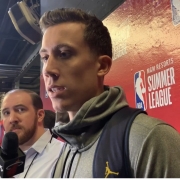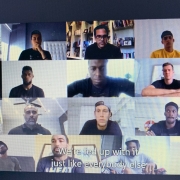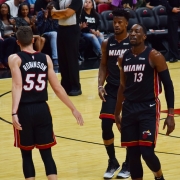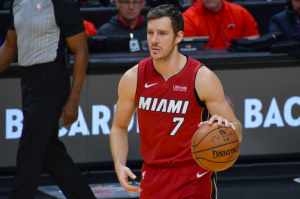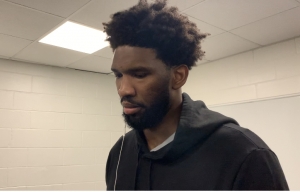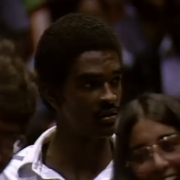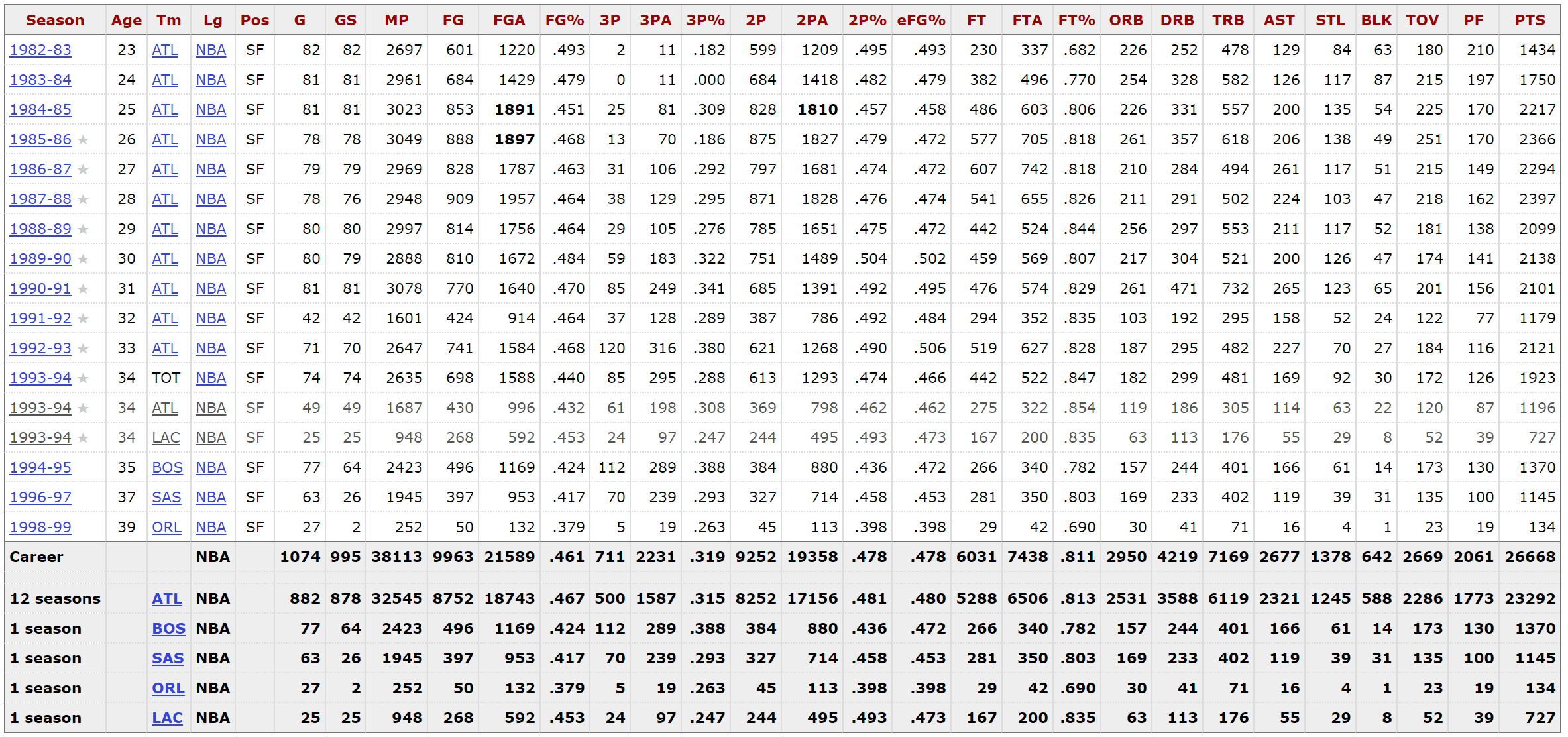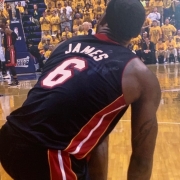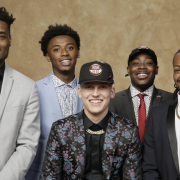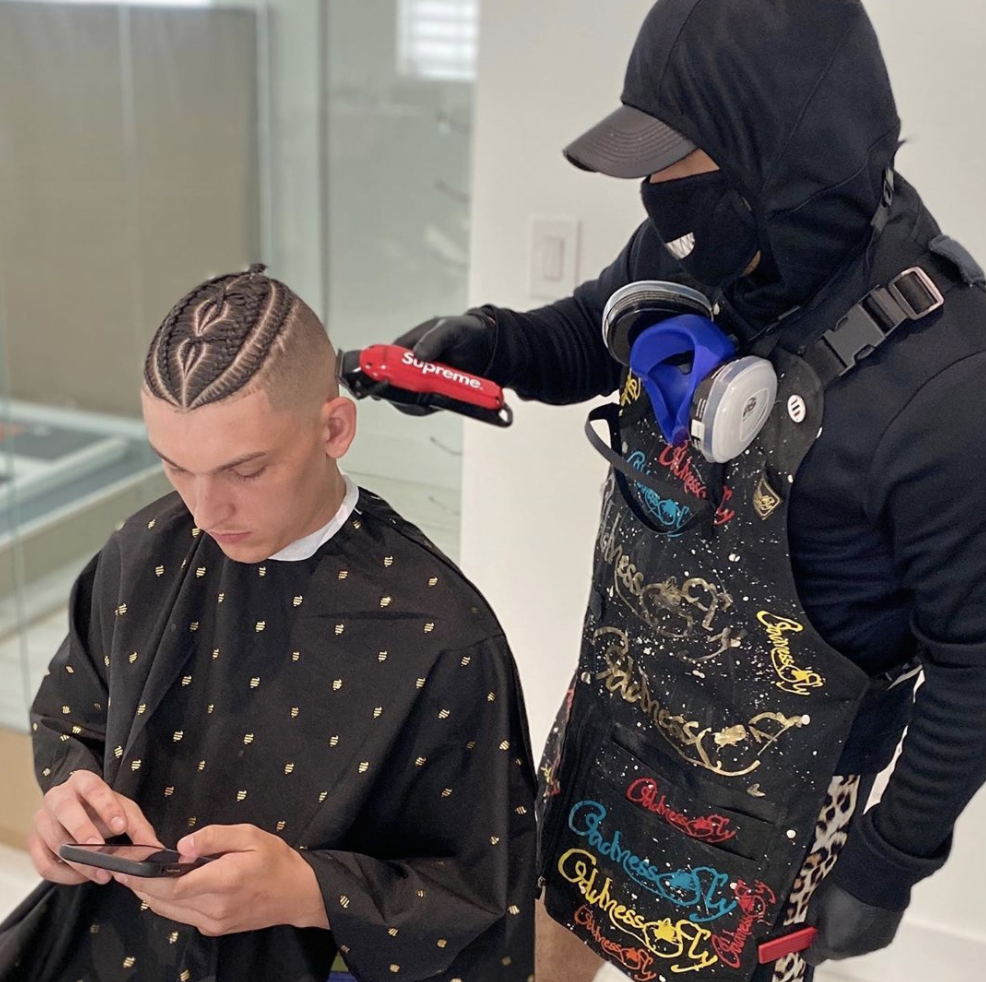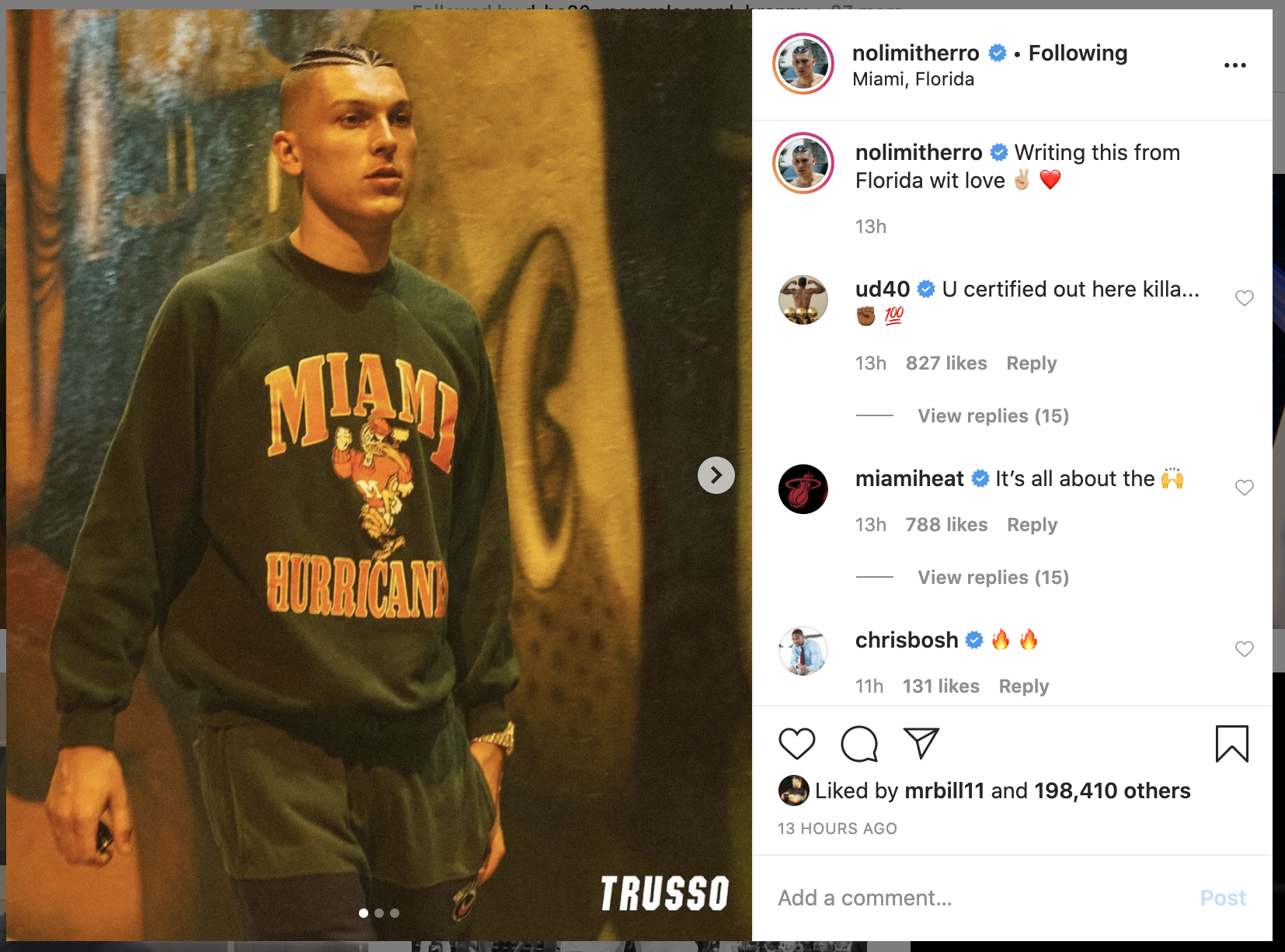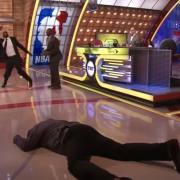How Erik Spoelstra Transformed the Heat’s Offense
It’s a hectic scene in the Miami Heat’s locker room on the night of Dec. 13. To the immediate right is the franchise’s new star Jimmy Butler, recounting the last moments of a thrilling game to one of the biggest media scrums of the season. To the left is a Heat employee, chopping it up with Derrick Jones Jr and trying to figure out which pairs of shoes he’ll bring on the road.
Other players are clearing out, trying not to dwell on what happened 30 or so minutes prior. In a sense, they quite literally didn’t have time to. The Heat just lost a nail-biter to the LeBron-led Los Angeles Lakers, and they have a meeting with Luka Doncic and the Dallas Mavericks in less than 20 hours.
The Heat’s 113-110 loss to the Lakers was only their seventh defeat of the season to that point, putting them at 18-7 on the year. The loss also came under questionable circumstances; the NBA would later announce that Butler was fouled twice on the final possession – once before the inbound, and again during the potential game-tying three-point attempt.
From the outside, it’s easy to view this as a moral victory of sorts. The Heat took the Lakers to the wire, and very well could’ve won that game. For those who hadn’t watched the team closely to that point, the game served as a wake-up call. It was 48 minutes of proof that this team could beat anybody.
That isn’t how the Heat viewed it.
This was a missed opportunity. There was an expectation to win. It isn’t enough to prove that they can compete with the top dogs; this should’ve been proof that they are a top dog.
That standard is why Miami wasn’t surprised when they started the season so well. That unwavering belief, that expectation of excellence, was instilled by head coach Erik Spoelstra months prior.
Laying the Foundation
While Butler was the prized signing of the summer, the acquisition of Meyers Leonard signified quite the shift for the Heat. Out went Hassan Whiteside, their max-contract interior force, and in came Leonard, a “spacer” that did most of his work in the background.
Spoelstra connected with Leonard almost immediately after the trade to get a feel for Leonard, as well as lay out his plans for him this season.
“He came to L.A. to watch me work out two different times,” Leonard told me. “We went to lunch and he really wanted to get to know me. Which, first of all, that helped me understand just how much he cares.”
What further drew Leonard to Spoelstra was his commitment to improvement. Spoelstra rose through the Heat ranks as a video coordinator, scout and assistant coach before landing the head coaching job in 2008. His unorthodox path screams, “I work harder than just about everyone,” and that intensity was evident very early on from Leonard’s vantage point.
“The level of intensity is different,” Leonard said. “[Blazers head coach] Terry [Stotts] is a little more calm, cool and collected. The level of obsession Spo has with coaching is impressive. He is always bringing it, like, every day. I’ll never forget I was sitting in training camp during our first team meeting. He says, ‘I don’t want to wait,’ or something to that effect. ‘I don’t want to wait.’ So I’m like, alright, where is he going with this?
“He’s like, ‘We have a very talented group of guys in this locker room, and coaches that are ready to make you guys better. I’m ready to start competing for a championship now.’ I’m like, wow, this guy’s with it!”
Not only is Spoelstra with it, he’s done it. He has been part of three championship teams in Miami, one as an assistant (2006) and two as the leading man (2012, 2013). It’s easy for newcomers to fall in line when you have that kind of pedigree. His video and scouting background, combined with his experience “in the trenches” allows him to connect on a deeper level.
“This is a coach that’s made it to the top,” Solomon Hill told me. “I give credit to my past coaches, but [Spoelstra] has taken that next step, not just once, but a few times. Having that calm confidence about scenarios we may face kinda sets the standard.”
Hill also mentions that Spoelstra has an instant-recall about him, a nod to his scouting background.
“It’s crazy how his brain works,” Hill added. “He can tell you about a specific play against Dallas [in the Finals] that was a turning point, what happened here and what happened there.”
Spoelstra’s demeanor makes sense when you consider his path and background. It gives him instant credibility with players, and it’s a big reason why he and Butler have clicked.
That, and Spoelstra won’t hesitate to voice his displeasure.
“Thibs looks like he’d cuss you out in a heartbeat,” Butler told me. “Brett Brown didn’t look like that, he looked like a really nice guy. Spo looks like a really nice guy, right? He’ll cuss your a** out so quick.”
Being able to balance all of that – his experience, his intensity, his attention to detail and the human element – is what makes Spoelstra one of the best coaches in the NBA.
“There’s the intensity, but there’s also the Spo that cares about you,” Leonard said. “The Spo that asks how you’re doing, and thanks you for what you bring to the table. It feels like he’s really in the trenches with us. It’s a very connected feeling with Spo, like you really want to go to war with that dude.”
Seeking out help
The main thing Spoelstra preaches is accountability. Knowing your role, accepting said role and giving everything you have. In order for him to hold others accountable, he has to do the work himself.
Spoelstra famously goes outside of the box to improve as a coach. He’s visited Seattle Seahawks head coach Pete Carroll to observe how Carroll runs things. Most notably, Spoelstra visited then-Oregon football head coach Chip Kelly to study his offense after Miami’s flop in the 2011 Finals. The Pace-and-Space Era began soon after, with Miami winning back-to-ball titles after they flipped their offense on its head.
This summer, Spoelstra attempted to make a similar shift. The Heat was (and is) known for their defense; Miami entered the summer having ranked in the top 10 in defensive rating seven of the past nine seasons. The offense, however, had been an inconsistent mess. That was especially true after LeBron James left the team after the 2013-14 campaign.
Spoelstra had new talent coming in. Butler was a perennial All-Star, a rugged-bucket getter set to give them a half-court boost they sorely missed. Replacing Whiteside with Leonard would give them more of a stretch element. Rookies Tyler Herro and Kendrick Nunn had shown real creation flashes during Summer League, though their regular season roles were in question.
Even with the shiny new toys, Spoelstra knew he had to reinvent himself. This time, he sought out the counsel of Jim Crutchfield, a coaching legend in the Division II ranks. Crutchfield took over at West Liberty University in 2004, quickly turning them into one of the winningest programs in the country over the next 13 years before resigning and taking over Nova Southeastern University.
Crutchfield compiled a 359-61 record from 2004-2017, giving him an 85.5 winning percentage. What intrigued Spoelstra wasn’t just the amount of winning, but the way Crutchfield racked up those wins.
“Over 15 years, we are averaging 100 points a game,” Crutchfield told the Miami Herald in an interview. “It’s not so much about points per game as efficiency and points per possession. We’re among the top in the country in points per possession. We do it via a motion offense.”
Spoelstra entered the offseason wanting to diversify the offense. With a seventh-place finish in offensive rating this season, it’s safe to say that goal was achieved.
Xs & Spos
Spoelstra didn’t copy-and-paste Crutchfield’s offensive philosophy. In terms of play types, the Heat’s offense looks almost nothing like Crutchfield’s. Via Synergy, nearly 28 percent of Nova Southeastern’s offensive possessions came in transition, while that figure was 13.3 percent for Miami.
However, you can see some similarities in their “early offense” actions, particularly with Bam Adebayo operating from the elbows.
The Heat have also expanded their toolkit in the pick-and-roll game. They’re running a larger share of them overall – 19.6 percent of their possessions have come via pick-and-roll this year versus 18.8 last year, via Synergy – and they’ve featured more bodies.
Via Second Spectrum, the Heat have run 7.2 “double picks” per game this season, up from 4.1 the year prior. Flowing out of the “Double Drag” alignment is something Trae Young and the Atlanta Hawks, in particular, have made a staple, but the Heat have made good use of it as well. Among 61 players that have logged at least 100 possessions in “double pick” situations, the Heat have three players in the top-15 in efficiency: Nunn (2nd, 1.33 PPP), Goran Dragic (8th, 1.24 PPP) and Butler (12th, 1.21 PPP).
There were signs of more pick-and-roll variety in the preseason. When asked about it, Spoelstra expressed how he “loved the versatility” of his bigs.
“Some of our offense is different quite naturally because of our personnel,” Spoelstra told me. “Meyers may make it look a little different with how he does it compared to bigs we’ve had in the past. Meyers’ shooting, Bam’s physicality and presence in the paint, [Derrick Jones Jr.] brings an immediate boost of energy when he comes into the game.”
Left out of that mix was Kelly Olynyk, who was recovering from a bone bruise in his knee at the time. Like Leonard, Olynyk went on to provide value as a floor spacer in ball-screen actions. Via Second Spectrum, Olynyk ranked fourth in the NBA this season in scoring efficiency (1.15 PPP) in pick-and-pop situations (min. 200 picks).
The Heat have done a better job of getting their ball-handlers downhill earlier in the clock. Via Second Spectrum, the Heat ranked 25th in points per possession (1.27) on shots within the first half of the shot clock. This year, their 1.35 mark is a hair behind the Dallas Mavericks for the league lead.
Of course, you can’t talk about Miami’s offense without mentioning their success with dribble-handoffs (DHOs). Via Synergy, the Heat lead the NBA in DHO frequency (8.8 percent of possessions), possessions per game (9.6), points per game (10.2) and efficiency (1.07 PPP).
Spoelstra has empowered Adebayo with more offensive responsibility, allowing him to flow into those two-man dances with Miami’s plethora of ball-handlers and shooters. The connection with him and Duncan Robinson has been particularly deadly.
Per a source, via Second Spectrum:
MIA is generating nearly 1.32 PPP on the Duncan Robinson-Bam Adebayo DHO this season.
That goes up to 1.43 PPP vs teams playing "drop" coverage.
So many options out of it. It's the epitome of "pick your poison."
🗣️ SOUND ON pic.twitter.com/ALZ3b7wfIx
— Karens In Paris (@NekiasNBA) August 9, 2020
Among DHO pairings with at least 100 possessions, the Robinson-Adebayo duo led the NBA in efficiency this season, generating an ungodly 1.32 points per direct handoff, via Second Spectrum. To put that into perspective, Giannis Antetokounmpo scored 1.14 points per possession in transition this season.
Robinson is the biggest reason the Heat have been the NBA’s most prolific shooting team this season. He’s one of 28 players attempting at least 7.0 threes per game; he’s also the most efficient, draining 44.6 percent of those looks.
Much like Adebayo, Spoelstra has given Robinson the ultimate green light to stretch himself. Spoelstra made waves when he called Robinson one of the best shooters on the planet, despite Robinson shooting just 28.6 percent from three in limited action last season.
Now, you could probably count on one hand the amount of shooters you’d take over Robinson in the league today.
Set for a Run?
The Heat now stand as one of the most interesting teams to track in this year’s playoffs. They will face the Indiana Pacers in round one, a team they won the season series against (3-1). In addition to the Heat arguably having the two best players in the series, the Pacers are entering the postseason with black marks on three of their five best players.
Victor Oladipo is still trying to work himself back from a right knee injury that robbed him of most of his 2019-20 campaign. Domantas Sabonis, a first-time All-Star this year, will miss the series due to plantar fasciitis. T.J Warren, freshly named to the NBA’s All-Bubble team, has been playing through plantar fasciitis all season, and that’s before getting into the trouble he’s had dealing with Jimmy Butler. An argument can be made that the Heat should not only win the series, but win it quickly.
A series victory over the Pacers would likely set them up for a showdown with the Milwaukee Bucks. The Heat won the season series, 2-1, and held a 23-point lead in the loss. They’ve shown they have the personnel to at least bother Antetokounmpo; that effort is spearheaded by the versatile Adebayo.
Miami’s pick-and-roll and DHO attacks are uniquely qualified to neutralize the Bucks’ “drop” defense. With Milwaukee’s bigs hanging back to take away shots at the rim, it leaves them susceptible to the kind of looks that the Heat have thrived on all season.
The Bucks will rightfully be favored in that series. They have the NBA’s best player in Antetokounmpo, a second All-Star in Khris Middleton and a deep cast of talented role players that allow them to go big or downsize however they see fit.
But it wouldn’t be a complete shock if the Heat could pull off the unthinkable.
Not to Adebayo, who thinks the Heat can “make a run and make noise and do a lot of things people said we couldn’t.”
Not to Butler, who told ESPN that he thinks the Heat can win a title this season.
And especially not to Spoelstra, who set the bar title-high at the beginning of the season.
He doesn’t want to wait; neither do they.
Nekias Duncan (@NekiasNBA) works for a variety of outlets, but can be found frequently on Five Reasons Sports platforms, and has covered the past two NBA All-Star games for Five Reasons.
Find the Five Reasons Sports shirts here…..
